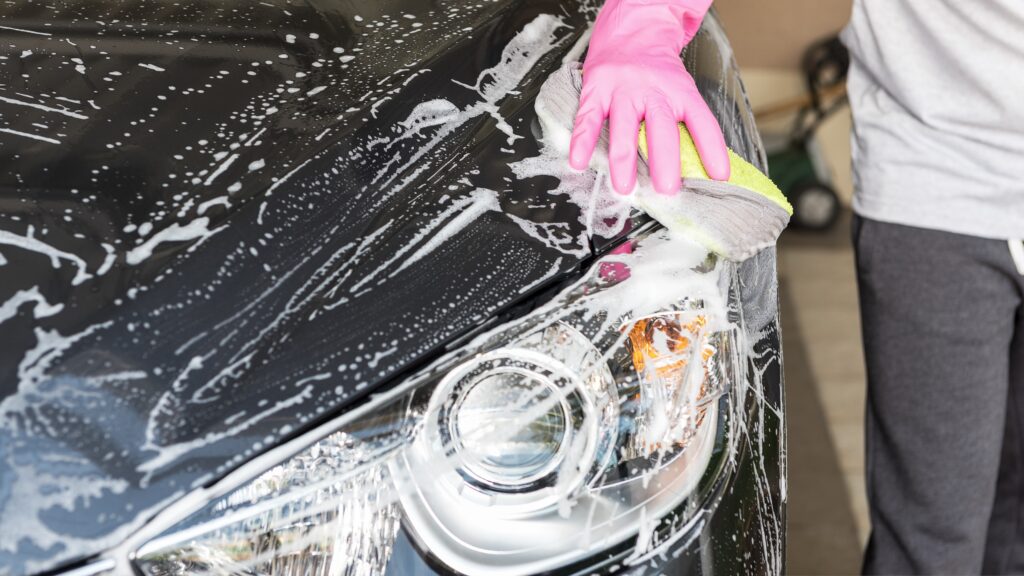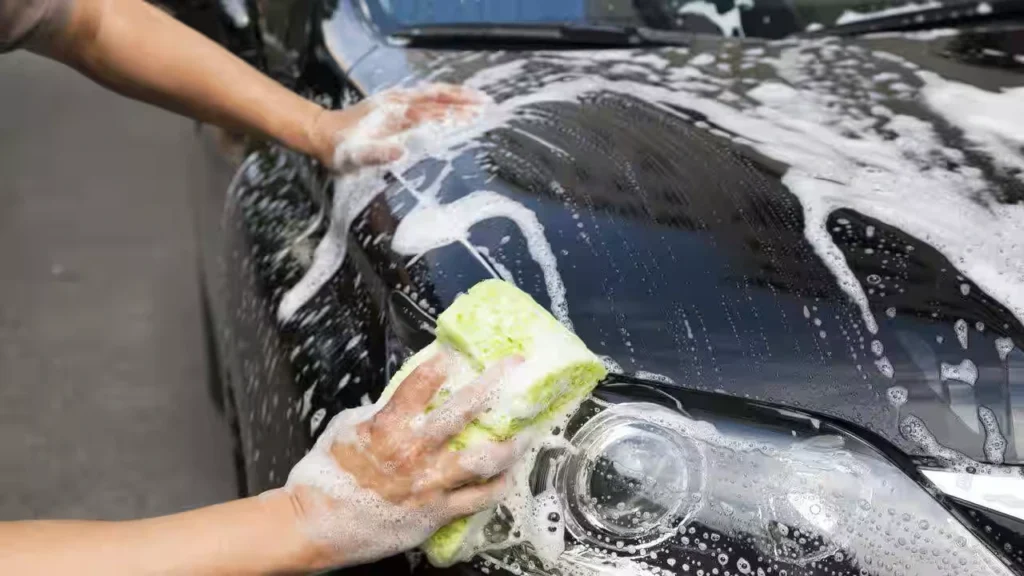Keeping your car’s leather interior clean is key to preserving its look and feel. Regular cleaning prevents dirt buildup, stops stains from settling, and helps the leather stay soft and fresh. Well-maintained leather not only looks better but also lasts longer, protecting your investment.
Leather requires care that is different from other materials. Using the right tools and products ensures we don’t damage the leather or dry it out. With simple techniques, we can tackle everyday dirt as well as stubborn stains without harming the surface.
Understanding how to clean and maintain our car’s leather seats will keep the interior looking new and comfortable. This guide will show us the best ways to clean leather effectively and care for it over time.
Understanding Car Leather Interiors
Car leather interiors vary in type and quality, so knowing what kind of leather we have helps in choosing the right care methods. Leather can face problems like stains, drying, and cracks. Regular cleaning protects the leather, keeping it soft and extending its life.
Types of Leather Used in Vehicles
Most car leather comes in two main types: aniline and semi-aniline. Aniline leather has no protective coating, giving it a soft feel and natural look, but it can stain easily. Semi-aniline leather has a thin protective layer that makes it more resistant to dirt and spills.
Another common type is pigmented leather, which has a thick surface coating. This makes it tougher and easier to clean but less natural to touch. Often, luxury cars use full-grain leather, which is the highest quality, showing natural markings and ageing beautifully.
Knowing the leather type informs us about its care needs. For example, aniline needs gentle cleaning and conditioning, while pigmented leather can handle stronger cleaners.
Common Problems with Leather Interiors
Leather in cars often faces issues from daily use and exposure to sunlight. The most common problems are drying and cracking. When leather loses moisture, it becomes brittle and splits. This can happen quickly if the car is parked in direct sun without protection.
Stains and dirt buildup are other major concerns. Spilled drinks, food, and body oils can leave marks that get harder to remove over time. Dust and grime also settle into leather pores, dulling the colour and making it look worn.
Without care, leather can fade or lose its softness, impacting the interior’s appearance and comfort. Repairing heavy damage often requires professional help, so preventing problems is best.
Benefits of Regular Cleaning
Cleaning leather on a regular basis keeps it fresh and prevents early wear. Removing dirt stops it from settling deep into the fibres, which protects the surface finish. This also helps avoid stains becoming permanent.
Regular conditioning after cleaning adds moisture back into the leather, stopping it from drying out and cracking. It maintains flexibility and keeps the texture smooth and soft to the touch.
By cleaning and protecting leather often, we preserve the car’s value and maintain a high-quality interior look. It also makes long drives more comfortable by keeping the seats supple and pleasant.
Essential Tools and Products for Leather Cleaning
For effective leather cleaning, having the right products and tools makes all the difference. We need cleaners that are gentle but effective, materials that won’t damage leather, and conditioners that protect and preserve its look.
Recommended Cleaning Solutions
We should always use a pH-balanced leather cleaner designed specifically for car interiors. These cleaners remove dirt without stripping natural oils or causing the leather to dry out. Avoid household detergents, alcohol-based wipes, or harsh chemicals, as they can damage leather quickly.
Popular and tested options include sprays or liquids made for leather seats. We like Meguiar’s Ultimate Leather Detailer.
Applying the cleaner with a damp cloth lets us control how much product touches the leather, preventing over-wetting. Always follow product instructions for best results.
Safe Brushes and Cloths
Using the right cloth or brush is key to cleaning without harm. Microfibre cloths are soft, trap dirt well, and won’t scratch delicate leather surfaces. We recommend using slightly damp microfibre cloths to wipe seats gently.
If needed, a soft-bristled brush can help clean seams and textured areas. But it must be gentle enough not to wear down the leather fibres. Avoid stiff brushes or rough sponges which can cause damage or fading. Our favourite is from CP CAR Detailer.
Leather Conditioners and Protectors
After cleaning, using a leather conditioner is important to keep the material soft and prevent cracks. Conditioners nourish the leather by restoring lost oils, which help maintain flexibility and shine. Perma Glass PG Leather Care is a safe choice.
Protectors seal the surface, defending against spills and UV damage. Look for products specifically made for automotive leather. Applying conditioners and protectors regularly extends the life of leather interiors and keeps them looking fresh longer. Waxco M-Series Leather Protector does the job for us!
Effective Car Leather Interior Cleaning Techniques
To clean leather car interiors properly, we focus on preparing the area carefully, using the right cleaning steps, handling tough stains with deep cleaning methods, and ensuring the leather dries correctly. Each part of this process helps keep the leather soft and damage-free.
Preparation and Precautions
Before we begin cleaning, it’s vital to remove dust and loose dirt. We use a vacuum with a soft brush attachment to avoid scratching the leather surface. This also helps clean the corners and stitching where dirt gathers.
We avoid harsh chemicals, as strong detergents or alcohol-based wipes can dry out the leather. Instead, we select a mild, pH-balanced leather cleaner made specifically for car interiors. Testing any product on a small hidden area first helps us ensure there is no colour loss or damage.
We also need to protect the car’s surrounding areas like plastic trims and carpets by using masking tape or cloths. This precaution prevents cleaner overspray from causing harm.
Step-by-Step Cleaning Process
First, vacuum the leather thoroughly to remove dirt. Next, lightly dampen a microfiber cloth or use a mild leather cleaner. We wipe down the entire surface gently, focusing on one section at a time.
For small stains, a mild soap solution applied with a cloth works well. We avoid soaking the leather because excess moisture weakens it. Instead, we use a slightly damp cloth and dry the area immediately after.
We clean difficult spots like seams or crevices using a soft brush or a crevice tool attached to the vacuum. This helps us keep all parts of the leather free of debris.
Deep Cleaning Methods
When dirt or stains are built-up, we need deeper cleaning. Using a specialised leather cleaner, we apply it to a microfiber cloth, not directly on the leather. Gently working it in, we focus on areas with grime or stubborn stains.
Sometimes, a leather cleaning foam or gel is effective, especially for oily or ingrained dirt. We leave it on for the recommended time before wiping off.
We never use household cleaners or bleach because they can strip the leather of its natural oils, causing cracks and stiffness.
Drying and Airing Procedures
After cleaning, it’s crucial to dry the leather properly to avoid damage. We use a dry, clean microfiber towel to pat the surface gently, removing moisture without rubbing hard.
Leather needs to air dry in a well-ventilated area but away from direct sunlight or heat sources like radiators. These can cause the leather to dry out and crack.
We make sure the car doors or windows are open slightly, creating airflow to aid drying. This step helps maintain the leather’s softness and prevents mildew or mould growth.
Long-Term Care and Maintenance Tips
Keeping leather seats in good shape means cleaning them regularly, protecting against stains, and adjusting care depending on the season. Paying attention to these details helps the leather stay soft, strong, and looking fresh for years.
Routine Cleaning Schedules
We should clean our leather interiors once every two weeks to stop dirt from settling into the material. Using a soft, damp microfibre cloth is best for wiping down surfaces without scratching. For deeper cleaning, a specialised leather cleaner can be applied every 2-3 months to remove oils and grime that build up.
After cleaning, always use a leather conditioner to keep the material supple and prevent it from drying out or cracking. Applying conditioner every 3 to 6 months ensures the leather maintains its softness. Regularly check for wear spots and treat them early to avoid costly repairs.
Preventing Stains and Damage
To prevent stains, we need to act quickly whenever spills happen. Blot liquids with a clean cloth rather than rubbing to avoid pushing the stain deeper. Avoid using harsh chemicals or household cleaners, as they can cause damage.
Using seat covers can protect the leather from UV rays, sweat, and dirt. It is also wise to avoid placing sharp or heavy objects on the seats to prevent cuts or tears. Regularly dusting and vacuuming helps keep dirt from grinding into the pores and causing permanent marks.
Addressing Special Situations in Leather Interior Care
Leather interiors sometimes need more focused care when facing tough stains, mould, or damage from age. Knowing how to treat these issues correctly helps us protect the leather without causing harm.
Treating Stubborn Stains
Stubborn stains often need a deeper clean than regular maintenance. We start by gently blotting any fresh spill with a clean, dry cloth. Avoid rubbing, which can push the stain deeper into the leather.
For set-in stains, we use a mild, pH-balanced leather cleaner. Apply it carefully with a soft cloth in small sections. Test any cleaner on an unseen part first to check for colour fading or damage.
If the stain persists, we can make a homemade cleaner with equal parts white vinegar and water. Dab lightly and rinse with a damp cloth before drying. Never use harsh chemicals or abrasive tools, as these can crack or discolour the leather.
Dealing with Mould and Mildew
Mould and mildew develop when leather seats are exposed to moisture and poor ventilation. We must act quickly to prevent damage and the spread of spores.
First, we take the car to a dry, ventilated area and wipe the affected spots with a soft cloth. Mix one part isopropyl alcohol with one part water and gently clean the mouldy areas. This kills the spores without harming the leather’s finish.
After cleaning, we let the leather dry naturally. Avoid direct sunlight, which can dry leather too fast and cause cracking. Conditioning the leather after treatment helps restore moisture and protects against future mould growth.
Restoring Faded or Cracked Leather
Leather fades and cracks from sun exposure, dryness, or lack of care. We begin by cleaning the leather thoroughly to remove dirt and oils before any treatment.
For small cracks, leather conditioners with nourishing oils can help soften the leather and reduce visibility. We apply conditioner evenly, allowing it to soak in with a soft cloth.
If the leather is deeply cracked or heavily faded, a specialised leather restorer or dye might be necessary. These products replenish colour and seal the surface but should be used carefully. Testing on a hidden area first is always best to avoid uneven colour and further damage.
Conclusion
Caring for your car’s leather interior takes the right approach and consistent effort. With proper cleaning tools, gentle techniques, and regular conditioning, you can keep your seats soft, clean, and free from damage. Whether you’re removing stains, preventing cracks, or simply doing routine maintenance, small actions go a long way in preserving the value and comfort of your car.
Want to level up your overall car care routine? Check out our Ultimate Guide to Car Washing and Detailing at Home in Malaysia for step-by-step instructions, or learn how to protect your ceramic-coated vehicle with our guide to the best car shampoos in Malaysia.


